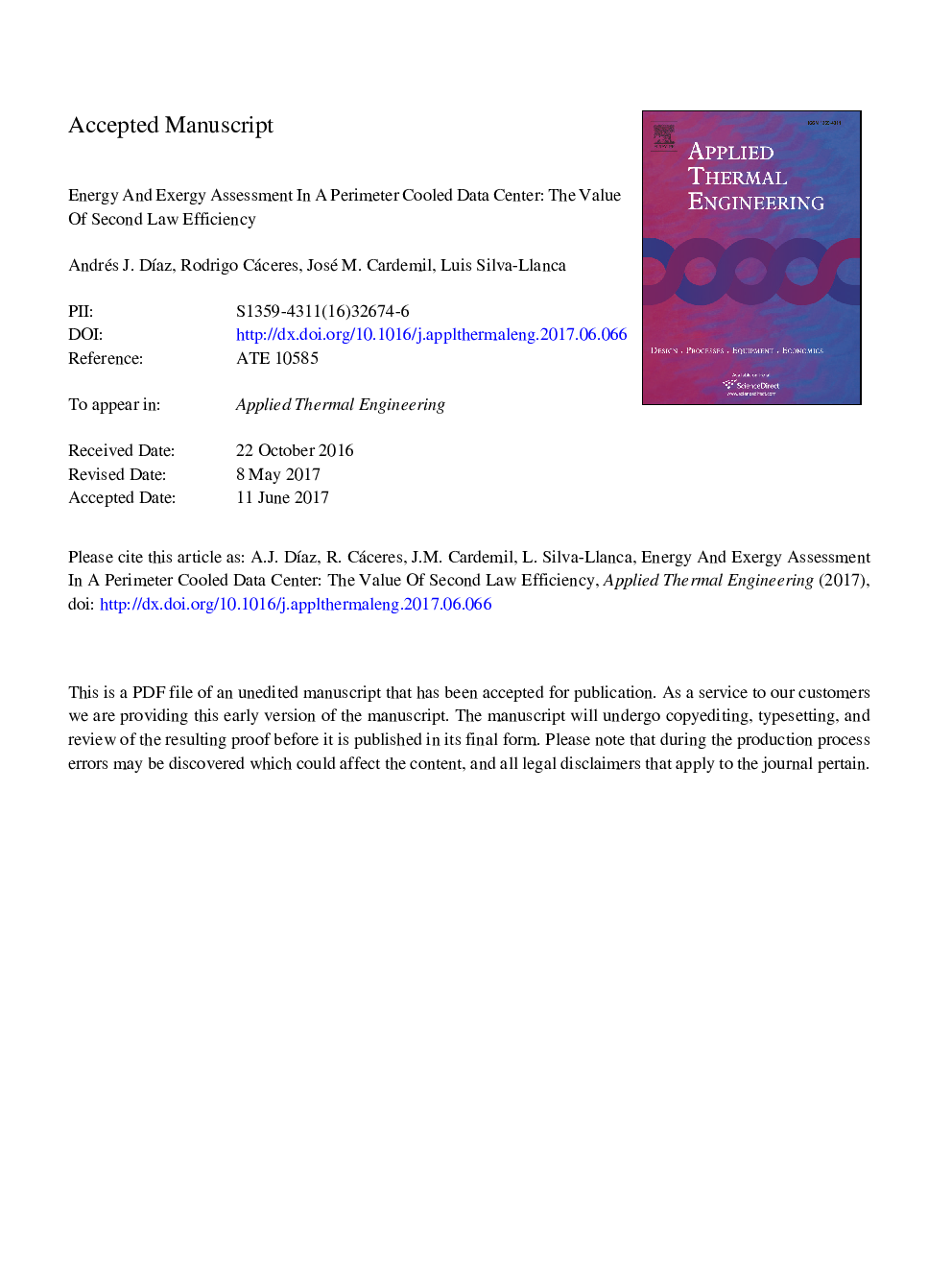| کد مقاله | کد نشریه | سال انتشار | مقاله انگلیسی | نسخه تمام متن |
|---|---|---|---|---|
| 4990666 | 1457105 | 2017 | 35 صفحه PDF | دانلود رایگان |
عنوان انگلیسی مقاله ISI
Energy and exergy assessment in a perimeter cooled data center: The value of second law efficiency
ترجمه فارسی عنوان
ارزیابی انرژی و اگزرژی در یک مرکز داده خنک کننده محیط: ارزش دومین کارآیی قانون
دانلود مقاله + سفارش ترجمه
دانلود مقاله ISI انگلیسی
رایگان برای ایرانیان
کلمات کلیدی
مرکز اطلاعات، تخریب اگزرژی، سیستم خنک کننده،
موضوعات مرتبط
مهندسی و علوم پایه
مهندسی شیمی
جریان سیال و فرایندهای انتقال
چکیده انگلیسی
The Data Center Industry remains in steady growth with worldwide energy consumptions in the order of hundreds of TWh, and yearly growth rates higher than the growth of global electricity consumption. Electronic cooling represents an important part of a Data Center's energy demand, thus efficient thermal management practices have become critical in recent years. The Coefficient of Performance (COP) appears as the most commonly used metric when assessing the energy efficiency of a data center, although sometimes it proves insufficient to address irreversibilities in a system. In this work, the information provided by the COP is complemented with a second law efficiency analysis as a way to measure inefficiencies. The software Engineering Equation Solver (EES) is utilized to apply energy and exergy balances in each individual component and the global refrigeration system, simultaneously. The study considers variations in the number of active racks and the increase in hot air recirculation within the room, assuming that the approach closely represents the first years of operation. Maximum efficiencies are achieved when all racks are active and when aisle air containment prevents recirculation. Fewer active racks increase the exergy destruction, due to excessive power usage in a low demand situation. The chiller accounts for the highest power consumption with high density racks; whereas for low density racks, the cooling tower consumes most of the power. The second law analysis justifies the chiller power consumption based on its cooling requirements, and elucidates oversizing in the cooling tower power consumption. The COP increases with hot air recirculation, which could mislead the design towards inefficient decisions; the second law efficiency shows an inverse relationship with the recirculation, thus properly capturing the inefficiencies and better guiding the design. Appropriate energy efficiency analyses should consider both thermodynamic approaches (first and second law) to ensure proper use of working fluids cooling potential and maximize the system energy efficiency.
ناشر
Database: Elsevier - ScienceDirect (ساینس دایرکت)
Journal: Applied Thermal Engineering - Volume 124, September 2017, Pages 820-830
Journal: Applied Thermal Engineering - Volume 124, September 2017, Pages 820-830
نویسندگان
Andrés J. DÃaz, Rodrigo Cáceres, José M. Cardemil, Luis Silva-Llanca,
